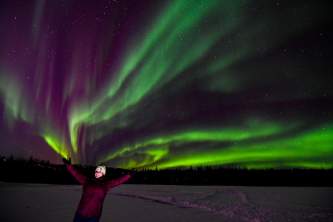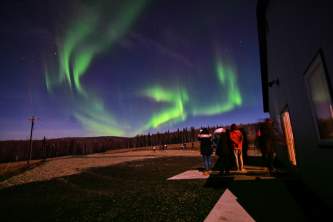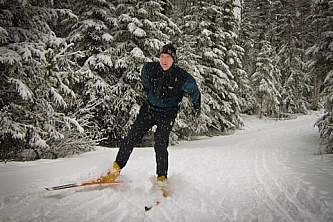Packing The Car For a Safe Winter Adventure in Alaska
Alaska’s cold season has arrived, and you would like to get the family out of town for an adventure. But it’s really cold out there, and the forecast threatens snow. And there isn’t much traffic. Plus it gets dark early.
So you start to have second thoughts. Like—What if the car breaks down when it’s below zero? Or a tire goes flat? Or we get stuck in a snowdrift and no one comes along?
Maybe, you begin to tell yourself, the family ought to stay home until summer green-up.
Don’t do it! Just because hard-core winter has arrived, you don’t have to give up exploring the Far North’s outdoors. Winter adventuring in Alaska can actually be easier than summer, with no tourist congestion on highways, no mosquitoes and (virtually) no worry about bears.
A bit of planning
A few precautions in advance will make your winter road trip reasonable, doable and safe—whether a half-day excursion to ski or sled, or an epic drive into the mountains.
Think of it this way: Most things that might go wrong on a winter road trip are the same mishaps that occur in summer. The difference is that you must change the tire or wait for help in a winter environment.
So here is our advice in a nutshell: Take along the items you need to be comfortable and confident while solving problems when it’s cold and/or snowy.
Before you go
- More so than in summer, vehicle should be in reasonably good working order with no symptoms of a pending breakdown. Frigid temps tend to make existing mechanical problems worse.
- A robust defroster and heater system.
- All lights working. It gets dark early.
- Make sure you have a spare tire filled with air, jack system, lug wrench. Winter trips are no occasion to trust to luck.
- Fresh (for-that-season) winter windshield wiper blades. To ensure a clean view through any sleet.
- Necessary eye glasses for day and night. Sunglasses are needed for the blinding glare of Alaska’s low-angle winter sun (this can be debilitating.) Prescription glasses for day and night (if needed).
Always-in-the-car winter checklist:
- Gloves. Imagine bare fingers on lug nuts at Minus 10. You need to protect your fingers. Keep a pair in the car.
- Window ice scraper that reaches center of windshield.
- Snow shovel. Many models telescope or fold and can be packed inside spare tire compartment.
- Booster/Jumper cables and/or a pre-charged power bank.
- Tow strap or rope that enables another vehicle to pull your vehicle free from a snow bank or ditch. Know where these will attach.
- Flares or warning lights.
- Roll of duct tape.
Day trip (close to town) checklist:
- Small bag of kitty litter or sand for traction. This item could make the difference between sitting for hours and continuing.
- Headlamp or flashlight with extra batteries.
- First aid kit. No need for heroic or expensive measures. Load a freezer baggie with gauze, tape, strips, antibiotic ointment, over-the-counter pain and anti-inflammatory pills. Double check that you include any necessary medications for a long day.
- Multi-tool or simple tool kit (Phillips and flat-head screwdrivers, pliers, adjustable wrench.)
- Footwear. If your shoes are not good for stepping into snow, pack over-shoes or winter boots.
- Winter clothing. Hat, muff and mittens/gloves. Coat or parka sufficient for forecast. Consider including a layer of fleece or sweater for insulation. Wind or snow pants. Imagine exiting the car for an extended period or walking someplace.
- Toilet paper for roadside “emergencies.” Many rest stop restrooms close during winter. Include matches/lighter in the bag to burn off evidence.
- Hand wipes or sanitizer.
- Packets of chemical hand and toe warmers. These work.
- Water in bottles.
- Cell phone charger.
- Fuel line deicer.
- Snack food or energy bars. Carbs for quick warmth.
Extended trip (remote areas or multi-day) checklist
- A sleeping bag for each traveler. In case of a breakdown, you will be surprisingly toasty and comfortable in winter clothes inside a sleeping bag inside your vehicle. Even if it’s unheated. This works.
- Space blankets. To turbo-charge any warm up.
- An extra pair of dry winter socks. Terrific morale booster.
- Camp stove and fuel. Pot drinking cups. Spoons.
- Matches or lighter for stove.
- Hot drink and/or soup packets.
- Freeze-dried “heat in the baggie” meals to get through a night. One per person.
- Kit for quick field repairs. Nothing fancy: wire ties, needle and thread, bailing wire, duct tape.




